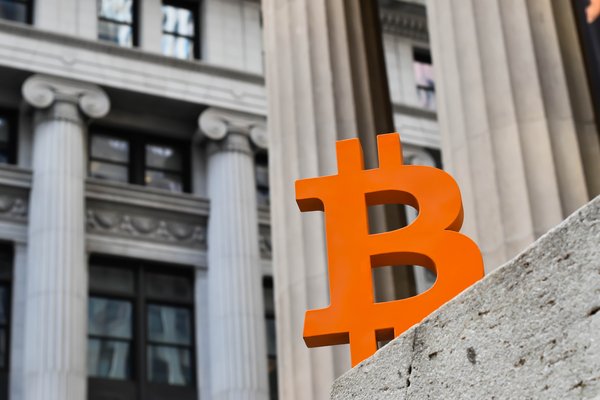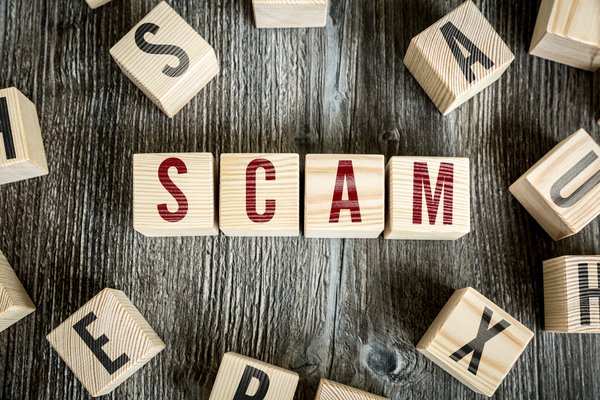Stellar (CRYPTO:XLM) is an open-source, decentralized payments network. It uses blockchain technology to allow users to transfer funds quickly and at a very low cost. The payments network does not show preference to any national currency; instead, the network has its own native cryptocurrency, Stellar Lumens.
Since launching in 2014, the Stellar network has processed billions of transactions, established partnerships with major companies, and become a popular cryptocurrency investment. Here's a detailed look at how Stellar works and whether it's a good buy.

What makes Stellar unique?
Plenty of digital currencies offer cheap, lightning-fast transactions. Stellar's advantage is that it works with any type of money. You could use Stellar to transfer a digital representation of the U.S. dollar, the euro, Bitcoin (CRYPTO:BTC), or any other currency on the planet.
Although many types of cryptocurrencies are intended to replace current financial systems, that isn't the case with Stellar. It's designed to enhance the world's financial systems by providing a single network where they can all work together.
For individuals, there are a couple of ways to use Stellar. Stellar apps and third-party services acting as network anchors give users an easy way to transfer funds to someone else, no matter where they live. You can also use it to purchase digital versions of different currencies -- a valuable option for people in countries that don't have a strong national currency and want to use another currency for their savings.
As an open-source network, the Stellar infrastructure is available for anyone to use and build on. Companies can use it to develop their own blockchain wallet, app, or crypto token. They can also use Stellar's network for payments and converting digital currencies to cash, and vice versa. And the Stellar Development Foundation has recently supported use of Stellar for a broader range of uses, including NFT minting and smart contracts.
Where Stellar came from
Stellar was created in 2014 by business partners Jed McCaleb and Joyce Kim. McCaleb was the founder of crypto exchange Mt. Gox and co-founder of the payment protocol Ripple, which he left due to conflicts about the future of the project.
Along with the Stellarn network, the team also launched the Stellar Development Foundation. Stripe CEO Patrick Collision collaborated on the nonprofit corporation, and Stripe provided $3 million to Stellar in exchange for 2% of the initial launch (2 billion XLM).
The Stellar Development Foundation is the organization behind Stellar. It supports the network's technical and business communities, maintains the codebase, and releases regular reports on the Stellar network.
How Stellar works
Stellar has a ledger that it uses to track ownership of all the accounts and crypto tokens on its network. It maintains the ledger and processes transactions with its own unique algorithm, the Stellar Consensus Protocol.
The Stellar ledger stores every account's balances and operations (what they want to do with their funds). For example, an account could have a balance of 1,000 XLM and 100 U.S. dollar tokens and a pending operation to send 100 XLM to another account.
All balances and operations are broadcast to the entire network every five seconds. Transactions are validated by computers that run the core Stellar software, which are called nodes. For each pending transaction, the nodes verify that the correct amount is transferred.
There are nodes around the world, and anyone can make their computer a node by installing the Stellar software. Their computer will then become part of the consensus process.
With the system it has set up, Stellar is able to process transactions within five seconds. The transaction fee is 0.00001 XLM -- a small fraction of a penny at today's prices. (The fee can rise when network activity is high, but it will still be quite cheap.)
Partnerships
The Stellar ecosystem includes a large number of projects and partnerships. Two of the most high-profile partnerships are with IBM (NYSE:IBM) and MoneyGram International (NASDAQ:MGI).
In 2019, IBM chose to build its World Wire global payments system on the Stellar network. World Wire uses digital currencies to improve the cross-border payments process. It allows transactions to process at a fraction of the cost and time they would take with traditional banking.
In 2021, MoneyGram announced a partnership with the Stellar Development Foundation. The partnership integrated MoneyGram's network with Stellar to allow consumers to convert USD Coin (CRYPTO:USDC) to cash, and vice versa. USD Coin is a stablecoin that follows the U.S. dollar.
Stellar also has several grant programs it uses to fund projects. The Stellar Community Fund (SCF), allows the Stellar community to vote on projects that will receive funding. It's open to any project that wishes to apply. Here are a few SCF winners:
- Blocknify is a document-signing service notarized by the Stellar network.
- Free Voting Platform is a voting service that uses the Stellar network to verify elections.
- Litemint is a gaming platform and NFT marketplace.
- SendIt is a wallet that people can use to send and receive payments by email.
Can I make passive income with Stellar?
It's possible to generate passive income with Stellar through the Ultra Stellar product. Ultra Stellar is built on the Stellar network and issues the following yield-generating tokens:
- yXLM
- yUSDC
- yBTC
- yETH
Each yield-generating token is backed 1-to-1 by the corresponding token. For example, 1 yXLM is backed by XLM.
Ultra Stellar lets you swap your regular tokens for yield-generating tokens and earn interest on them. If you have XLM, you can exchange it for yXLM and start earning daily interest payments. If you want to switch back and convert your yXLM to XLM, you can do so at any time.
Unique risks
Centralization is a notable issue with Stellar. The Stellar Development Foundation holds about 60% of the XLM supply. This gives it a significant amount of control over the cryptocurrency and its value.
Although the Stellar network uses decentralized nodes, it doesn't have that many validators. There are currently more than 50, but that's not a large amount, and it leaves the network more vulnerable to node collaboration and various attacks on processing capabilities.
Although this isn't necessarily a risk, it's also worth noting that Stellar hasn't given users much incentive to hold its XLM tokens outside of the 1 XLM minimum required to use its network. It doesn't offer crypto staking.
Is Stellar a good investment?
Stellar is often considered to be an underrated cryptocurrency investment. It demonstrates real-world usability and has established some excellent partnerships. The Stellar network is growing, with the number of year-over-year payments jumping by 378% from 2020 to 2021.
Like other cryptocurrencies, Stellar is volatile, and there's no guarantee that it will be a long-term success. One potential concern is that Stellar has similar uses to the Ripple payment protocol, but Ripple's native cryptocurrency, XRP (CRYPTO:XRP), has a much bigger market cap.
Ultimately, the decision to invest in Stellar depends on what you think of its future as a payment network and the team behind it. If you believe that blockchain technology is the future of cross-border payments, then Stellar could be a good choice.
How to buy Stellar
Stellar isn't quite as widely available as Bitcoin, Ethereum (CRYPTO:ETH), and other market leaders, but it's still easy to find. You can buy it on several of the top cryptocurrency exchanges. Here are a few of the major exchanges that offer it:
To buy Stellar, register for an account with one of those exchanges or another one that lists it. Once your account is ready, you can make the purchase.
Hopefully you've gained a greater insight on Stellar. Remember that crypto is volatile, and long-term price changes will affect your portfolio much more than weekly swings.

























































































































